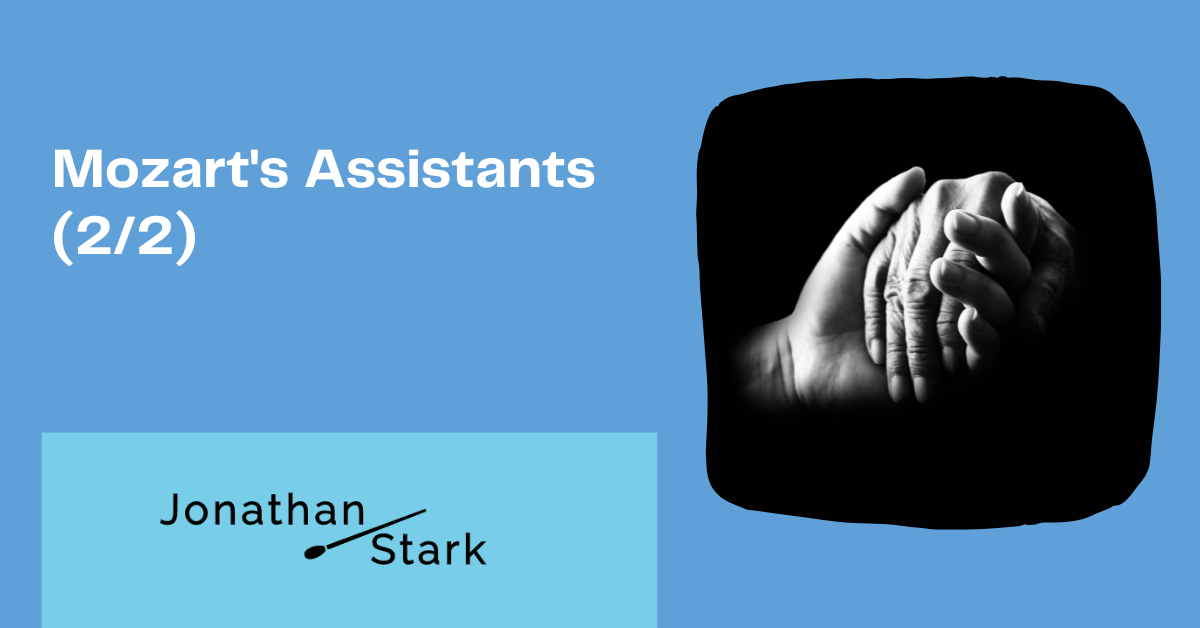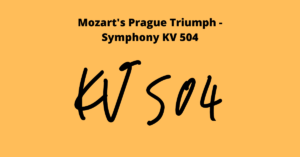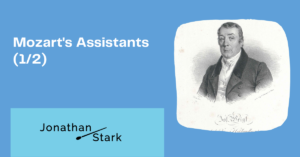Mozart’s days were packed with work. How was that to be accomplished? The answer: he had assistants. Two of them remained loyal to him until his last breath.
The first article in this two-part series was about Joseph Weigl, a Kapellmeister with whom Mozart liked to rehearse his operas. Today’s article focuses on a man who was especially helpful to Mozart in composing.
Franz Xaver Süßmayr
Franz Xaver Süßmayr is much better known today than Joseph Weigl: Süßmayr completed Mozart’s Requiem. There are numerous myths surrounding this completion. One of them is that Mozart dictated the Requiem to Süßmayr on his deathbed.
This myth is also persistent because of a very famous scene from the movie “Amadeus”: there it is Antonio Salieri who writes down the Requiem that Mozart dictates to him. This scene has nothing to do with reality, but it is great cinematic art. It is worth watching it again here (in this montage, moreover, the notes that are dictated are visible).
So – neither Süßmayr nor Salieri had the Requiem dictated to them at Mozart’s deathbed. Instead, Süßmayr was able to complete Mozart’s Requiem because Mozart had a very specific way of working. More on that in a moment.
Before that, more about an earlier collaboration between Mozart and Süßmayr….
Fast writing in a team: Mozart and Süßmayr compose "La clemenza di Tito"
When Mozart wrote a new opera, he was almost always under enormous time pressure. Mozart was an extremely fast writer: the score for Così fan tutte, for example, comprises over 600 closely written pages and was written in just under six weeks! In Mozart’s later opera La clemenza di Tito, however, time was so short that Mozart sought help…
…by having Süßmayr compose certain parts of the opera. If you are an opera fan, you know that in a classical opera, parts with orchestra (the arias, ensembles, and choral numbers) alternate with sparsely accompanied parts (the recitatives). Rule of thumb: in the orchestral parts, the composer shows what he can do; in the recitatives, on the other hand, a lot of text is dealt with in a short time according to standard compositional rules.
In La clemenza di Tito, Mozart outsourced the composition of the recitatives to Süßmayr. He himself composed the overture as well as the arias, ensembles and choral numbers. Thus the opera was completed in a very short time.
Süßmayr completes the Requiem – Mozart's "Zettelchen"
Back to Mozart’s Requiem, by the completion of which Süßmayr became famous. Further above I wrote that the completion did not happen at Mozart’s deathbed, but was made possible by Mozart’s special way of working.
For a long time it was assumed in Mozart research that Mozart did not make any notes or sketches during the composition process – simply because none were found. This assumption nourished the cult of genius around Mozart – Mozart as the composer to whom everything flowed effortlessly and who directly wrote down the music perfectly without corrections.
According to the current state of research, this assumption is false.
Before Mozart wrote down his music, he collected ideas on small, individual pieces of paper. These are Mozart’s “Zettelchen” (“little notes”), which have become famous in the meantime. With these “Zettelchen” Mozart kept track of the composition process and was able to sketch ideas quickly. When a piece was finished, the corresponding “Zettelchen” were destroyed – what remained was the fair copy.
Mozart also proceeded in this way with the Requiem. Then he died when the Requiem was only half finished – but the “Zettelchen” were still there. Süßmayr used these as a basis to complete the Requiem.
Nevertheless, Süßmayr was often severely criticized for his additions. The stylistic break between Mozart’s and Süßmayr’s parts – it runs between Hostias and Sanctus – is clearly perceptible to trained listeners and must have seemed even more glaring to contemporaries.
Süßmayr, by the way, later became Kapellmeisteradjunkt (something like an assistant conductor). Here the circle closes, because his superior was – Joseph Weigl 😊

Jonathan Stark – Conductor
Hello! I'm Jonathan Stark. As a conductor, it is important to me that visits to concerts and operas leave a lasting impression on the audience. Background knowledge helps to achieve this. That's why I blog here about key works of classical music, about composers, about opera and much more that happens in the exciting world of music.







